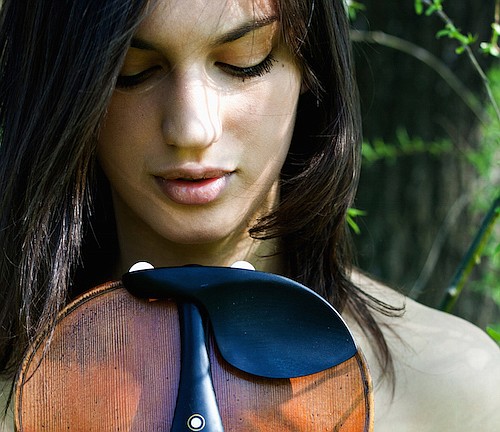- November 23, 2024
-
-
Loading

Loading

La Musica’s third program of its 30th anniversary season at the Sarasota Opera House Sunday was one of the most satisfying afternoons of chamber music we’ve heard on this series in a long time. There was only one small problem: in two of the three pieces, the musicians weren’t well matched.
For example, in the opening Kodaly Duo for Violin and Cello, the cellist, JeongHyuon Lee, had a big, warm, resonant sound, while the violinist, Claudio Cruz, had a sweet but comparatively small and introspective way of playing. And, in the closing Brahms Piano Quartet in A, the pianist Derek Han, and the violinist Cecilia Ziano each played with full, muscular tones, while violist Bruno Giuranna and cellist Antonio Meneses were both more reticent and delicate. Mismatched but not enough to spoil the over-all musicality of the concert.
It’s interesting to think of a new work as the lynchpin of a concert featuring older, well-known masters like Kodaly and Brahms but Jerry Bilik, a name known well in Sarasota (we just heard one of his pieces played by the Sarasota Orchestra), has a hit on his hands with his Quintet for Piano and Strings.
Played by violinist Federico Agostini, violist Giuranna, cellist Lee and bassist Scott Faulkner, it made a great first impression and, despite a few kinks that need to be worked out in the opening movement that seemed a bit disjointed and unsettled, the other three movements were inspired gems.
The second movement, marked Canzone, was stunningly romantic with colorful melodies and harmonic twists that were very 21st century concepts. The charming Minuetto was, like its tempo marking, dancelike and graceful. And the final Rondo, opening with a descending two-plus octave scale, was fun in its alternating three and four pattern, giving us measures of 11 beats like a big, slightly tipsy circle dance.
The grand ending was a sudden denouement bursting into “Happy Birthday,” a fitting finale for a work written for La Musica’s 30th anniversary season. (Bilik purposely called it his Opus 30.) It was such fun and so right, we can’t help but hope that future performances (of which there should be many), will call it “La Musica Piano Quintet,” an homage through this well-earned title.
Back to the opening Kodaly. The Hungarian composer’s Opus 7 is filled with folk-like melodies and rhythms but it’s also very impressionistic and colorful. As we said, Cruz and Lee were somewhat mismatched with Lee painting sounds from an abundantly colorful palette while Cruz was more muted and mellow in his moods. Still, it was an exciting reading that reminded us why we like this work so much. It’s also fun to hear other voices within the young Kodaly’s grasp, including allusions in the finale to Vaughan Williams’ “The Lark Ascending.” Who knows who influenced whom since both pieces were written in the same year but went unplayed for a while after. But Kodaly’s passage is very definitely a Hungarian bird without a trace of Britain anywhere near its feathers.
The Brahms, an old and dear friend, was well played except for the aforementioned mismatch among the performers and a few problems with intonation in the Finale. Interestingly, it also brought strains of musical influences but here, they were all Brahmsian. The A Major Piano Quartet, Brahms’ Opus 26, is an early work but, if you listen carefully, you hear themes of great symphonies to come, especially the First and the Fourth. They’re dim but they’re there. And it was fun hearing them in their formative stages.